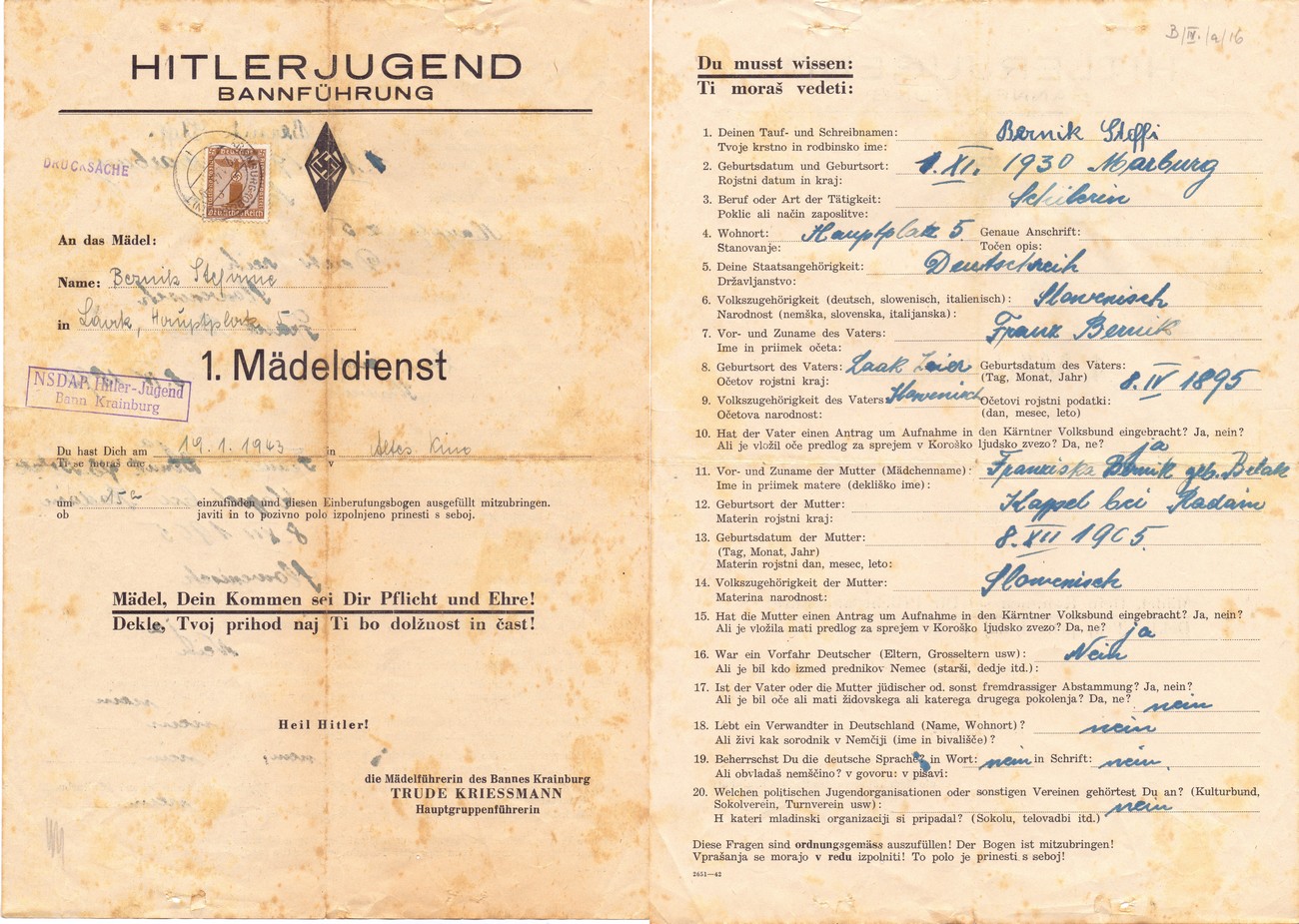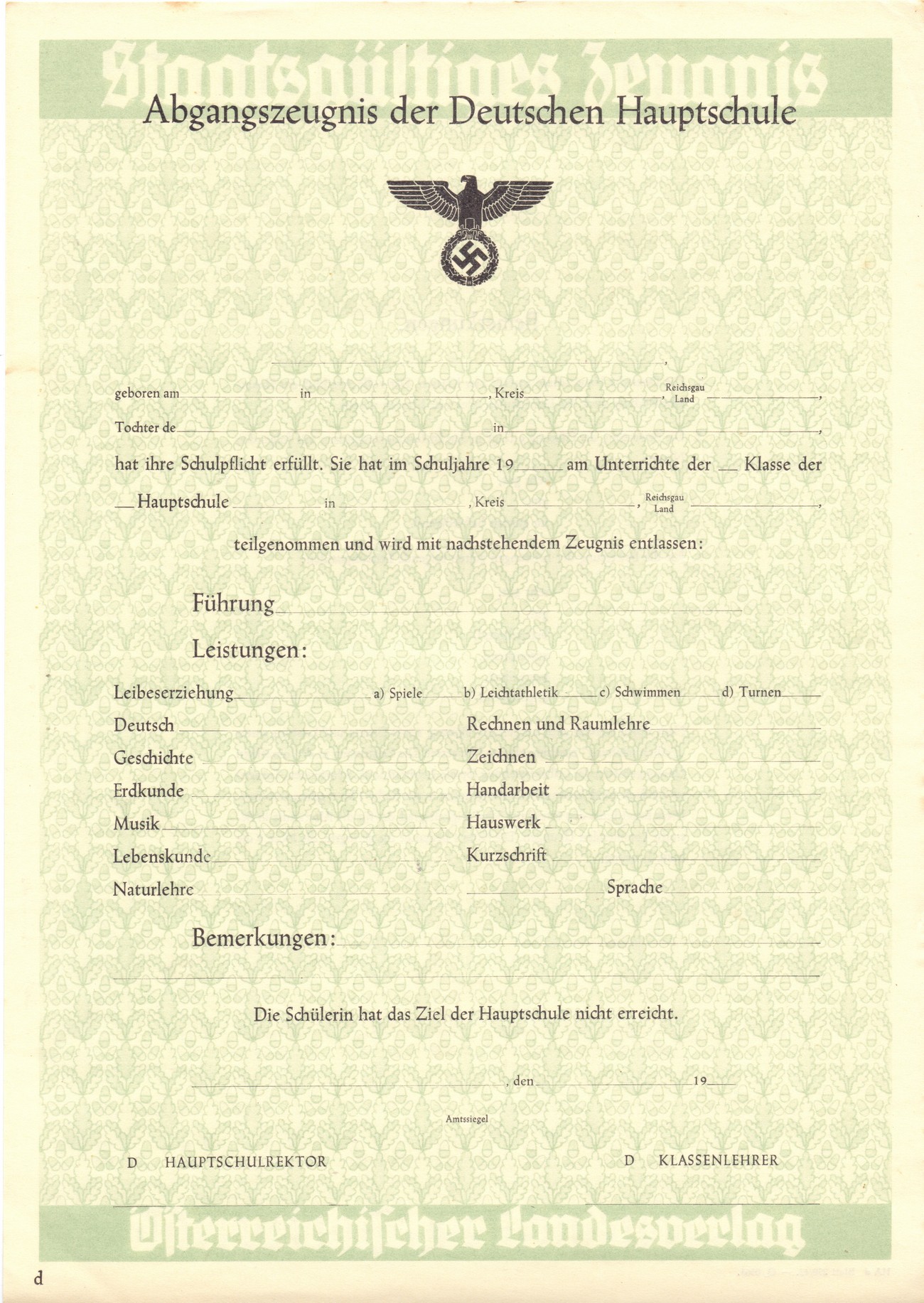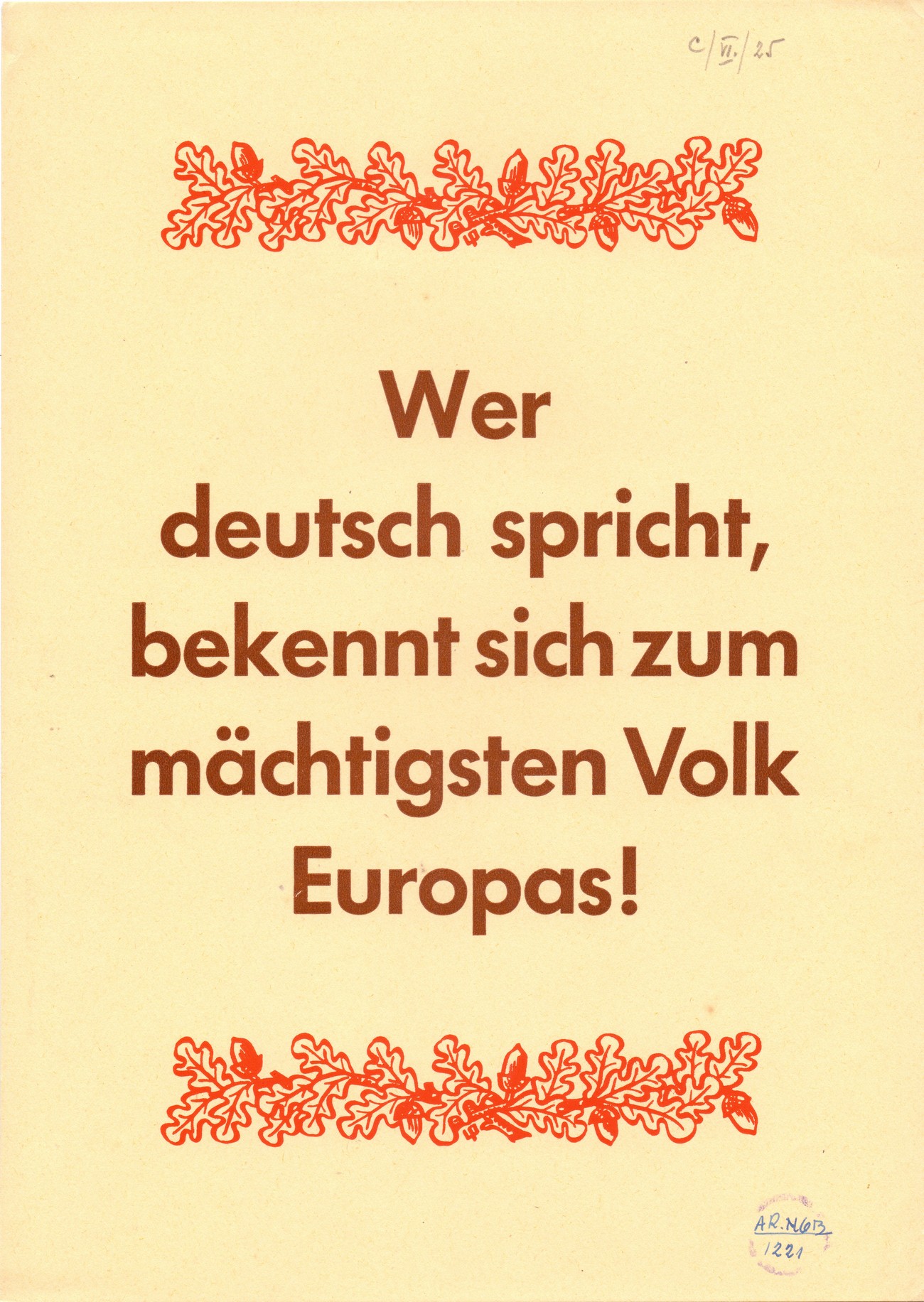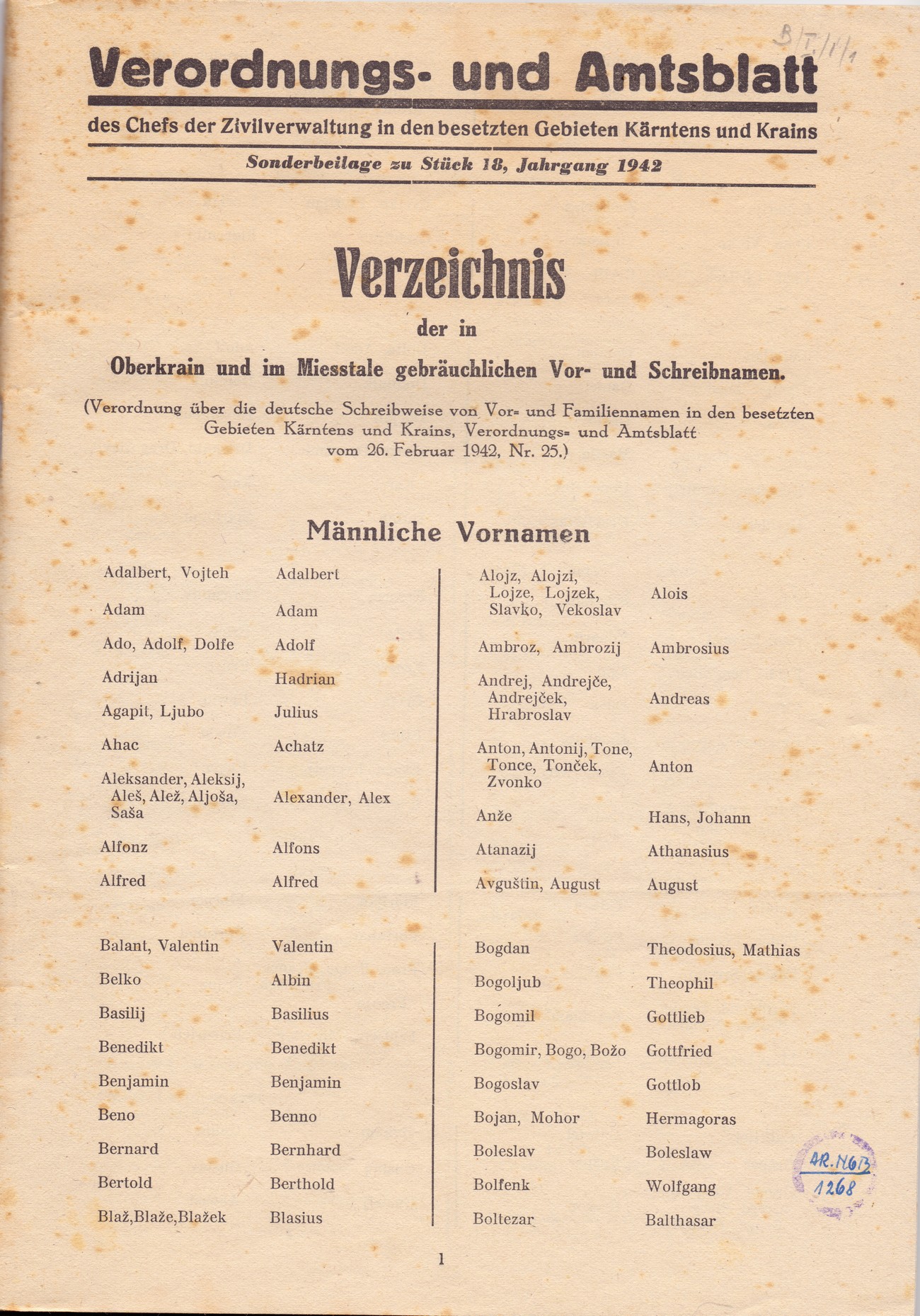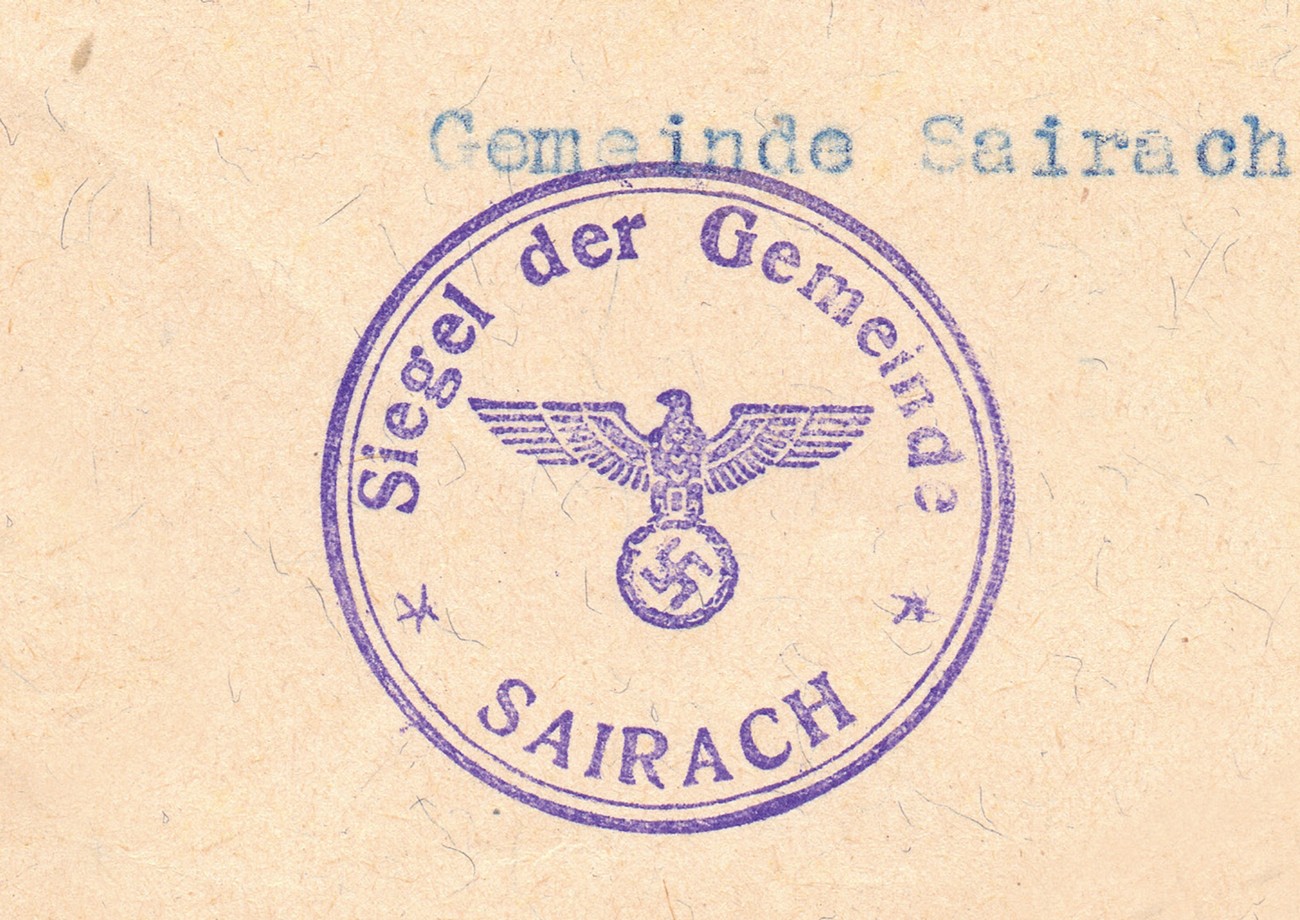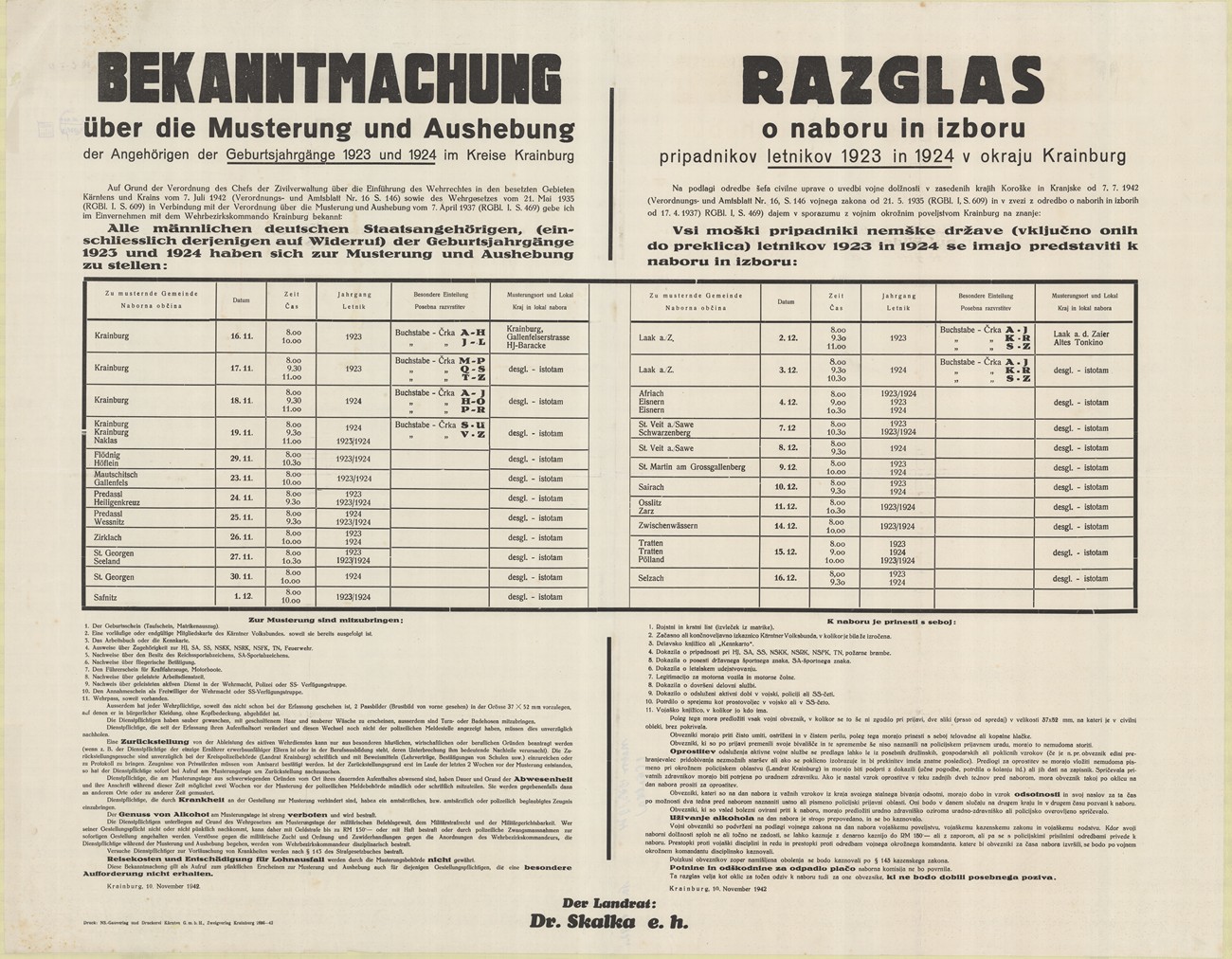The situation in Žiri significantly worsened with the German occupation on 27 April 1941, when the Italian units retreated. About 30 German gendarmes and financial guards came to town. They settled in the more important buildings, while setting up office for gendarmes in the new presbytery. With the introduction of the occupiers’ strict regime, the town gradually started to look more and more German – German flags were hanging from all of representative buildings, and the order to remove all Slovene signs and replace them with German ones was issued one day after the German takeover. Slovenian names were also Germanised. The population was also affected by the introduction of German in public offices and school. Slovenian teachers only taught for a few more days before class was interrupted and school facilities turned into offices for conducting census surveys. The latter resulted in consequent deportations. Among the deportees were also teachers who had been replaced by German personnel. The latter started teaching – in German, of course – on 4 September 1941. The children in the zones occupied by Germany thus attended German schools, while their peers on the Italian side attended Italian schools (at Jureč in Brekovice, for example). The priest was also deported from Žiri. Occasionally, a German priest would come visit the town, but mostly, the people of Žiri had to look for spiritual care on the Italian side of the border.
The German occupation also affected the town’s economy and culture. The ties with towns on the Italian side of the border were cut, and craftsmen needed to designate a certain portion of their products to the army, which also drafted some of them. The burning of about 2000 Slovenian books and the confiscation of theatre and cinema equipment were also some of the measures taken by the German invaders who wanted to obliterate the Slovenian nation. The theatre and cinema equipment then served the purposes of German propaganda. The latter was also carried out though German newspapers and organisations (Carinthian Homeland Association, Hitler Youth), which replaced the abolished and expropriated Slovenian societies.
